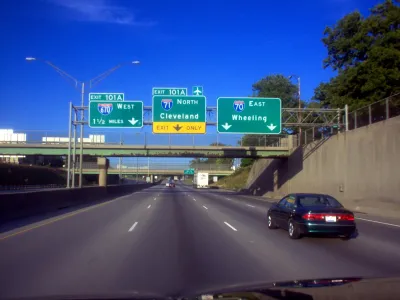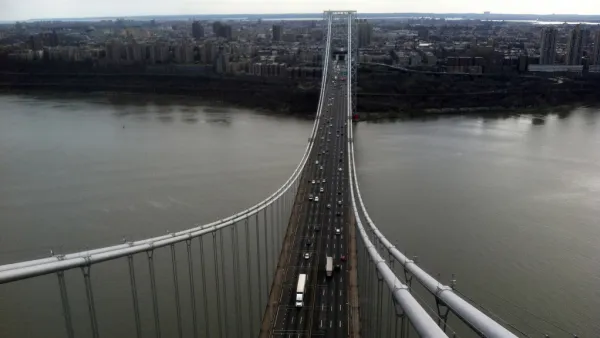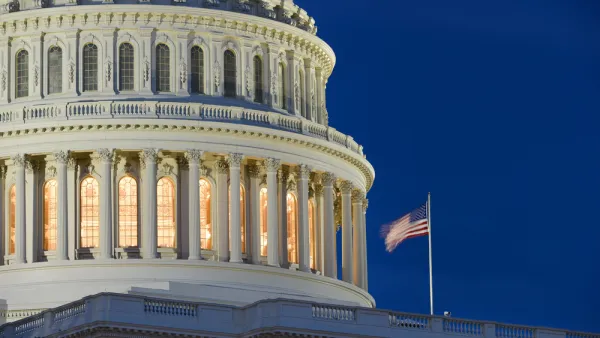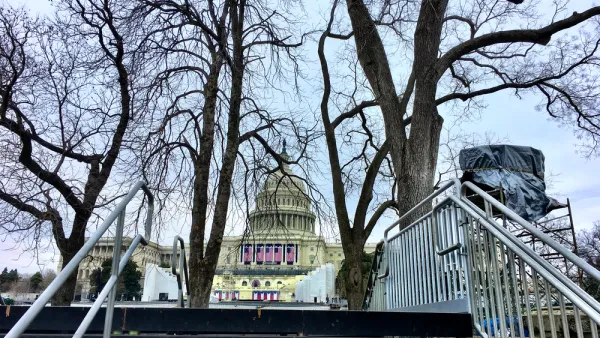While Congress debates its bipartisan infrastructure deal, a House-approved bill, the INVEST in America Act, waits in the wings with the potential to alter the direction of transportation planning in the United States.

"House Democrats are trying to use a massive climate and infrastructure bill to change how Americans get around — by breaking states’ decades-old fondness for building highways," writes Sam Mintz to sum up the stakes in the ongoing negotiations in Congress to finalize a bipartisan infrastructure bill.
Mintz is focusing on legislation approved in July by the House of Representatives—specifically, the $500 million INVEST in America Act (or federal transportation reauthorization) included in the larger "Moving Forward Act" infrastructure bill. According to Mintz, the INVEST in America Act has the potential to significantly shift infrastructure planning and funding in the United States, "baking climate policies into transportation." (The transportation sector is the largest source of greenhouse gas emissions in the United States.) The various layers of spending bills approved by the House also represent components of the American Jobs Plan proposed by the Biden administration in March with similar ambitions for changing the course of America's car-centric infrastructure tradition.
According to Mintz, the "INVEST in America Act" has encountered opposition from "state transportation departments and the road-building lobby." The U.S. Senate is working on a compromise, the Bipartisan Infrastructure Framework, that responds to some of those interests and could eventually influence the fate of the bill. Negotiations on Capitol Hill this week are reportedly not promising for the climate-friendly potential of the bill.
The purpose of Mintz's article is not to untangle the intricacies of Congressional lawmaking, but to reveal the history and consequences of the car-centric focus of U.S. transportation infrastructure planning and spending. "States have tended to use one primary strategy to tackle congestion: adding new highways or expanding existing ones," writes Mintz.
The aggregate evidence is staggering when considered in context of the scant signs of congestion relief and the encroaching realities of climate change: "From 1993 to 2017, states laid down 30,511 new miles of freeway lanes in the hundred largest urbanized areas — a 42 percent increase in highway capacity."
The INVEST in America Act would out a stop to the highway building proclivity by setting limits on the use of the National Highway Performance Program, asking states to "consider whether an 'operational improvement or transit project' would be more cost-effective than expanding capacity for single-occupancy vehicles," reports Mintz.
FULL STORY: Democrats look to crush states’ highway habit

National Parks Layoffs Will Cause Communities to Lose Billions
Thousands of essential park workers were laid off this week, just before the busy spring break season.

Retro-silient?: America’s First “Eco-burb,” The Woodlands Turns 50
A master-planned community north of Houston offers lessons on green infrastructure and resilient design, but falls short of its founder’s lofty affordability and walkability goals.

Delivering for America Plan Will Downgrade Mail Service in at Least 49.5 Percent of Zip Codes
Republican and Democrat lawmakers criticize the plan for its disproportionate negative impact on rural communities.

Test News Post 1
This is a summary

Test News Headline 46
Test for the image on the front page.

Balancing Bombs and Butterflies: How the National Guard Protects a Rare Species
The National Guard at Fort Indiantown Gap uses GIS technology and land management strategies to balance military training with conservation efforts, ensuring the survival of the rare eastern regal fritillary butterfly.
Urban Design for Planners 1: Software Tools
This six-course series explores essential urban design concepts using open source software and equips planners with the tools they need to participate fully in the urban design process.
Planning for Universal Design
Learn the tools for implementing Universal Design in planning regulations.
EMC Planning Group, Inc.
Planetizen
Planetizen
Mpact (formerly Rail~Volution)
Great Falls Development Authority, Inc.
HUDs Office of Policy Development and Research
NYU Wagner Graduate School of Public Service





























